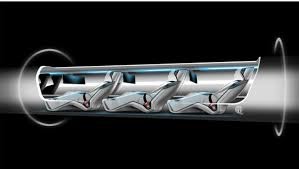Elon Musk’s Hyperloop transport system

An inside look at Elon Musk’s Hyperloop Transport system.
Sitting in traffic has become a prevalent issue as the population of the world continues to grow. Elon Musk, a business magnate, industrial designer, engineer, and philanthropist has come up with a solution for getting from place to place faster.
Musk has come up with the Hyperloop Transport System, which is basically a super train. This super train will most likely run underground and consists of passenger pods traveling through a tube.
According to Tum Hyperloop, “the Hyperloop is able to move at very high speeds due to contactless levitation, low aerodynamic drag and propulsion systems.”
Each pod in the Hyperloop will be five miles apart and each one will leave every 30 seconds. The pods will be made up of aluminum, which can withstand high temperatures and high pressure.
The Hyperloop system is green in terms of the environment, fully electric rather than oil-powered. On days when it is sunny, the Hyperloop will be solar-powered. The implantation of Hyperloop systems into major metropolitan areas will lead to a decrease in carbon emissions, helping reduce climate change and global warming.
“Initial estimates show hyperloop travel reducing greenhouse gas emissions by 90-95% per traveler.” According to The Energy Mix, if the hyperloop is implemented throughout the United States this could lead to cleaner air quality.
In many metropolitan areas, subway systems and trains already exist as transportation methods, but the implementation of the Hyperloop travel will add a new level of efficiency. Compared to a train, the Hyperloop would make the trip from Washington, D.C. to New York four times faster with just a 30-minute journey. The Hyperloop is even two times faster than a commercial airplane.
The installation of the Hyperloop system will not be a cheap project. Musk estimates that it will cost around $7.5 billion to build the system and a trip from Los Angeles to San Francisco will cost $20 one-way. The cost for a Hyperloop ticket will be no more than a high-speed train line ticket. It is the building of the system that is the financial burden.
The wait for the Hyperloop system to be available for society’s use continues. It is predicted that certification will be concluded by 2023 and will be in use by the public by 2029. Routes for the Hyperloop system are already being planned in many European cities and Poland. The system could change life as we know it for a lot of individuals, providing new opportunities to get from place to place efficiently.
